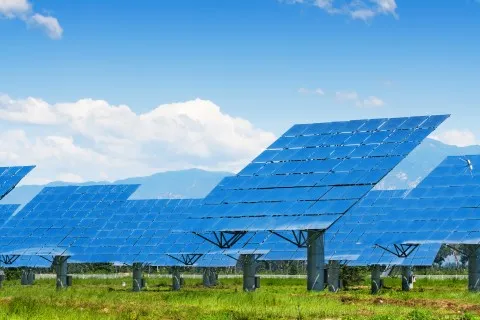
Solar and wind installations in two Indian states recover amidst waiver of charges
Other states are expected to follow suit in 2020.
The waiving of charges for renewables have brought growth recovery in installations of solar and wind projects for Indian states Haryana and Uttar Pradesh, according to a report by World Business Council for Sustainable Development (WBCSD).
Under its Solar Power Policy 2016, Haryana waived all charges for private renewable projects, as long as the power will be utilized within the state and will be counted towards the renewable purchase obligation (RPO) of the distribution company (DISCOM).
For consumers who are obligated to RPO, the solar power generated counts as part of its obligation, with any excess beyond it counting towards the DISCOM’s. This has compelled DISCOMs in these states to fast track permits for group captive solar projects.
“This is a new approach for DISCOMs to try and fulfil their RPO requirements without entering into public procurement of power on their own. Such an approach can help DISCOMs meet their RPOs at little or no cost whilst significantly speeding up corporate renewable open access capacity addition,” WBCSD said.
Already, state power transmission company Haryana Vidyut Prasaran Nigam (HVPNL) approved about 550MW of projects under the group captive model in July. The state had received applications for over 1,916MW.
Uttar Pradesh also approved 340MW of projects in March 2019 under the group captive model and on a first-come, first-served basis. This included applying to the power distribution company (DISCOM) for approval, which typically depended on the grid’s ability to connect power generating capacity at the local sub-station.
WBCSD expects other states to emulate this going into 2020.
Companies in India installed 1,855MW of third-party sale and open access solar and wind projects in April 2017 to March 2018, with nearly 81% coming from Karnataka where there was a 10-year waiver on most open access charges for projects commissioned until 31 March 2018.
After the government withdrew these exemptions, the market contracted. In April 2018 to March 2019, companies added only 494MW of capacity through corporate renewable PPAs under the open access route, with 158MW from solar projects and 336MW from wind.








![Cross Domain [Manu + SBR + ABF + ABR + FMCG + HBR + ]](https://cmg-qa.s3.ap-southeast-1.amazonaws.com/s3fs-public/styles/exclusive_featured_article/public/2025-01/earth-3537401_1920_4.jpg.webp?itok=WaRpTJwE)
![Cross Domain [SBR + ABR]](https://cmg-qa.s3.ap-southeast-1.amazonaws.com/s3fs-public/styles/exclusive_featured_article/public/2025-01/pexels-jahoo-867092-2_1.jpg.webp?itok=o7MUL1oO)









 Advertise
Advertise


